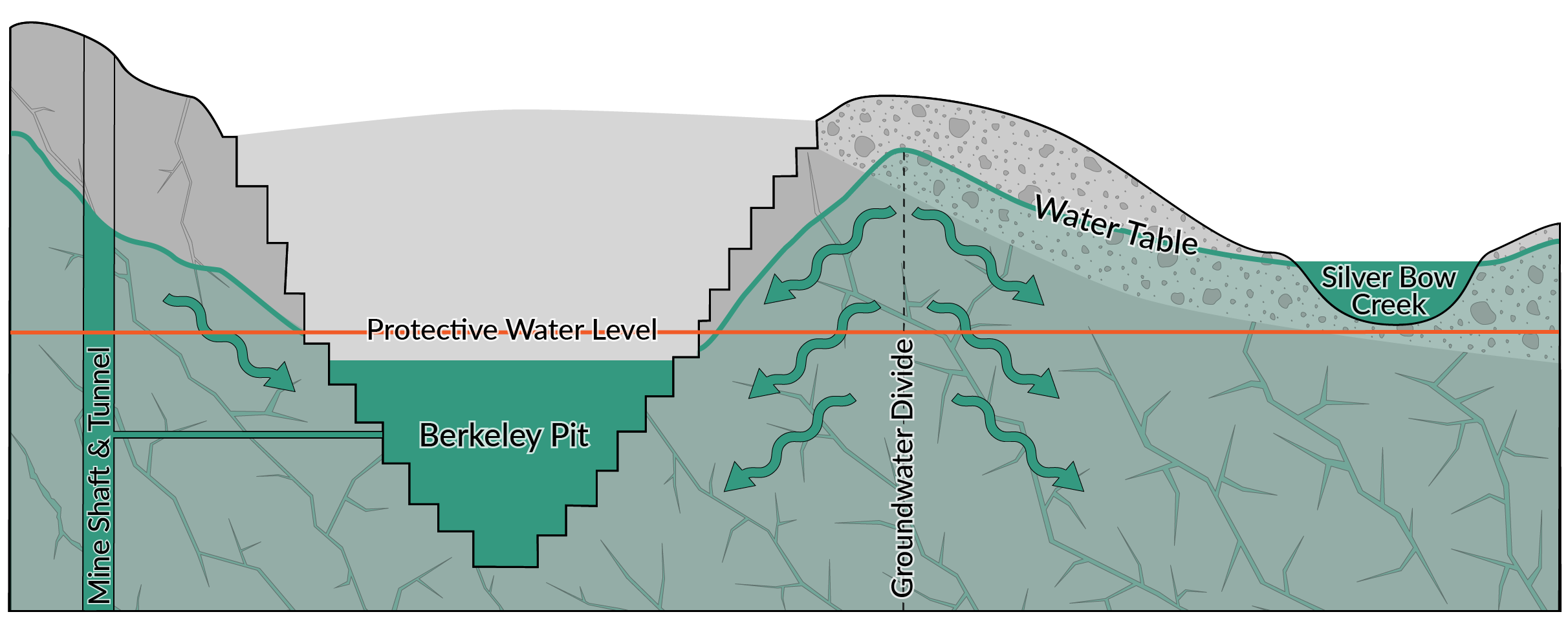What is the Protective Water Level?
The EPA requires water in the Berkeley Pit to be kept below the Protective Water Level to prevent contamination of other water bodies. The Protective Water Level for the Butte Mine Flooding Operable Unit is 5,410 feet above sea level. The Protective Water Level is 50 feet below the point where groundwater would begin to flow away from the Pit.
By keeping water below the protective level, the Berkeley Pit remains the lowest point in the Butte groundwater system. Water flows to the Berkeley Pit, and water cannot flow out of the Pit because groundwater cannot flow uphill. Therefore, by keeping water below the Protective Water Level, contaminated water cannot leave the Berkeley Pit and flow into surface water bodies, including Silver Bow Creek.

Cross section diagram showing how groundwater flows beneath Butte. The Protective Water Level is shown with the red line. Diagram is not to scale. Rendering courtesy of Clark Fork Watershed Education Program for PitWatch.
Why is the Protective Water Level important?
The United States Environmental Protection Agency (EPA) and the Montana Department of Environmental Quality (DEQ) determined collecting contaminated groundwater in the Berkeley Pit is the appropriate approach to manage the water and prevent it from contaminating other water bodies. EPA and DEQ determined the water level in the 1994 Record of Decision for the Butte Mine Flooding Operable Unit or the Berkeley Pit site. The elevation was initially deemed the “critical water level,” but the term was replaced by Protective Water Level in the first quarter of 2019 to more clearly communicate how the Berkeley Pit water level is protective of human health and the environment. For more information on this decision, please see the Superfund page.
What is being done to keep water from reaching the Protective Water Level?
Montana Resources and Atlantic Richfield are responsible for keeping water from reaching the Protective Water Level and they do that through a series of steps. The first approach to prevent water from reaching the protective level is pumping and treating the water in the Pit. The second is further treating the water so it meets water quality standards for discharge to area streams. The ongoing pumping and treating process along with discharge to surface waters has kept the Berkeley Pit water level relatively unchanged since late 2019. For information about water treatment, please see the Water Treatment page.
How is the water level determined?
For more information on water monitoring, please visit the Water Monitoring page.
